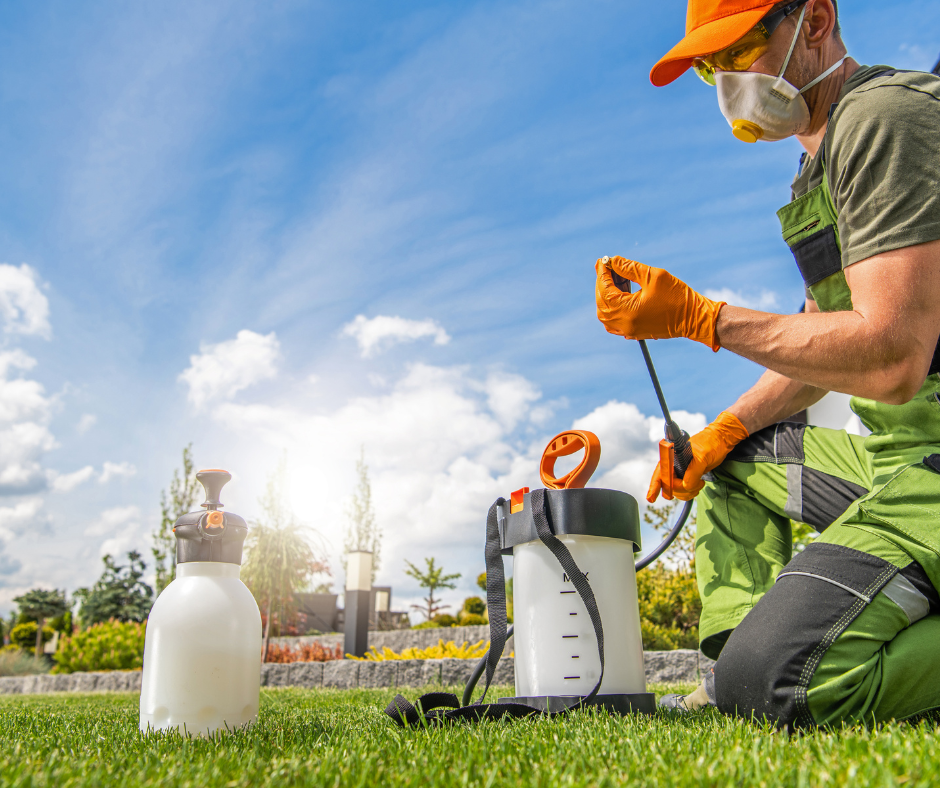Mixing Herbicides & Fertilizers with your Preemergent Lawn Application

Multitasking is something that I think is important when maintaining a lawn, time is crucial, and free time is sometimes hard to find. So, combining certain tasks is always beneficial; mowing whilst drinking a beer (joking)……… burning leaves/debris and making smores (serious)……..not bagging clippings in order to fertilize less, and mixing fertilizer or herbicide with my preemergent is one of my favorite timesavers.
Mixing products together can be confusing, after all they are being applied for different purposes and will consequently then provide different results. So, what can be mixed together?

First you need to understand where the preemergent target is and that is seeds that are in the first few inches of soil beneath the surface. Preemergent acts like blanket barrier in those first few inches where weed seeds develop. Once seeds first germinate, they grow a root that adsorbs water and nutrients and preemergent if it’s there. Once in contact with the chemical, newly germinated seeds die.
Preemergent is an application for the soil we can conclude and therefore needs to get into the soil by way of irrigating. Consequently, if it’s a soil application and you plan on irrigating straight away after applied, you might consider mixing other beneficial lawn items if the timing is right; wetting agents, soil conditioning products, root absorbed fungicides, biostimulants and insecticides are among some of the products that are commonly mixed together.
But if your plan is to delay irrigating until that evening then you could and can in most cases; mix in some foliar fertilizers, contact fungicides or selective post emergent herbicides. Always read the label though and conduct a jar test for compatibility.
Can I Mix a Post Emergent Contact Herbicide with a Preemergent Herbicide?
Yes, you can! All products have labels and should always be followed. With this type of application, you need to leave the product on the leaf surface for a while in order to be adsorbed by the plant. If you irrigate too soon your post emergent will not be as effective. You might get a little bit of yellowing from an application like this but a way to offset that is to put in some iron sulphate into the mix. This will help your lawn maintain its green instead of turning off color, chlorotic. For the golf course I apply iron sulfate at a rate of 2lbs to the acre. So, to size it down to home lawn terms in order to get 1000sqft; which I count as 1 gallon of water, it is about 7oz iron sulfate per 1 gallon water per 1000sqft.
Can I Mix Fertilizer with a Preemergent Herbicide?

Yes, you can BUUUUUUUTTTTT fertilizers with Ammonium Sulphate or Nitrate sources should be avoided in this scenario because they have been shown to make herbicides more effective, meaning greater burn potential on desirable turfgrass species. Preemergent herbicide by itself can cause some yellowing to the turf and mixing high burn potential Nitrogen could lead to some damage.
It’s a great trick if you want your herbicides to work better and faster on weeds, just be careful around desirable species. This method is fantastic for non-selective control applications like Glyphosate in beds or paths etc. Mix in some ammonium sulphate (21-0-0) as an example, not much, just about a couple of oz per gallon of water would result in greater faster impact on the plant. Perfect if you want a fast knockdown if rain is in the forecast.
Other products like urea, organic liquids, seaweed extracts, bio stimulants, humic acids, molasses, potash and some micronutrients are acceptable mixes. If you are hesitant about applying, it over your whole lawn then don’t. Apply it in a small obscure section of your property a week or two before your scheduled application and keep an ey on it. See the reaction or lack of.
Related Posts
Annual Lawn Care Program for Warm Season Grasses
Developing an annual plan is critical to the success of a healthy lawn. This program …
February 25, 2023When is the Right Time to Apply Preemergent?
Ok, if you are reading this you probably understand what a preemergent is, but do …
February 4, 2023© 2023 LaPageBrands, LLC. All rights reserved.



